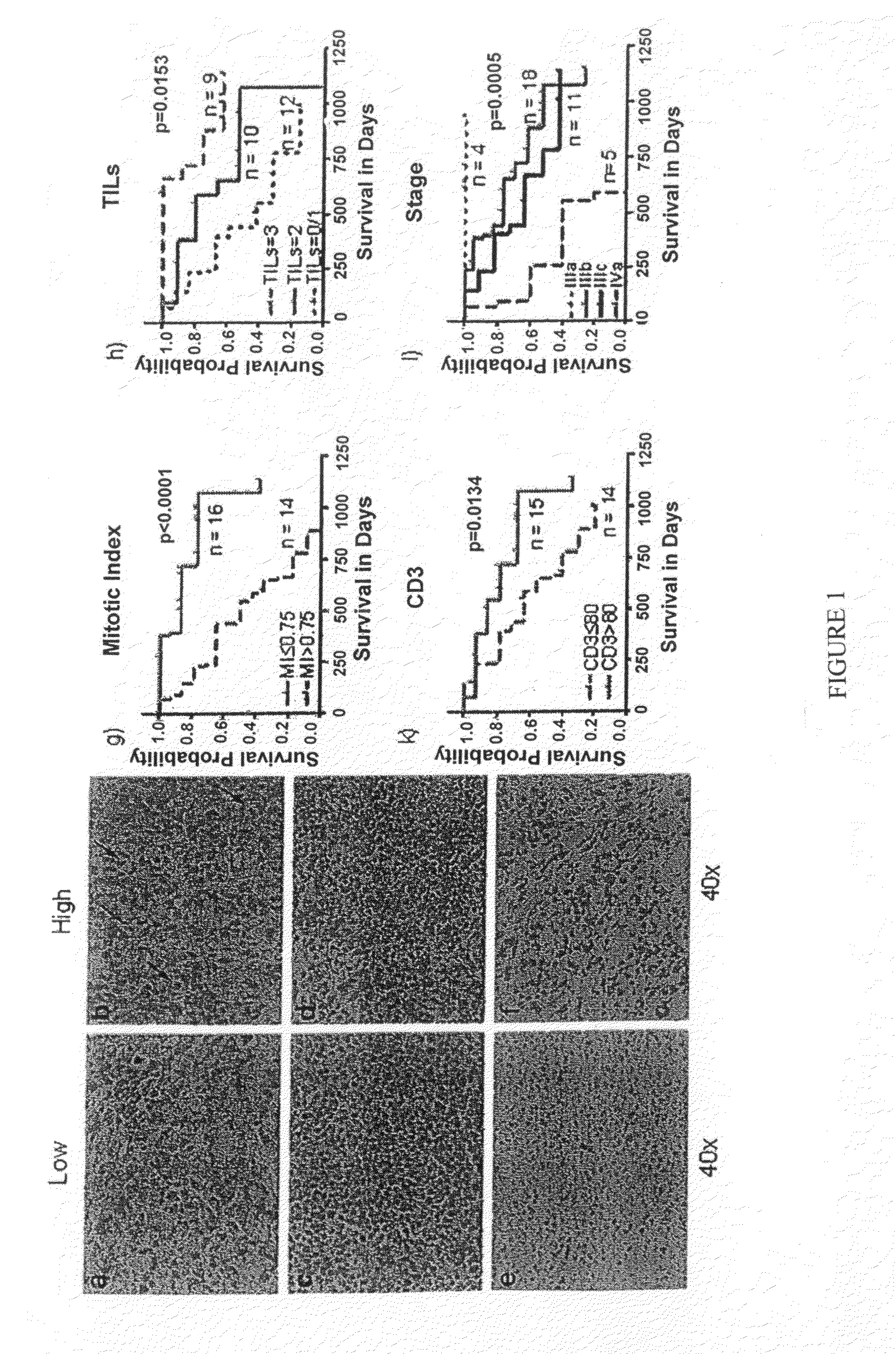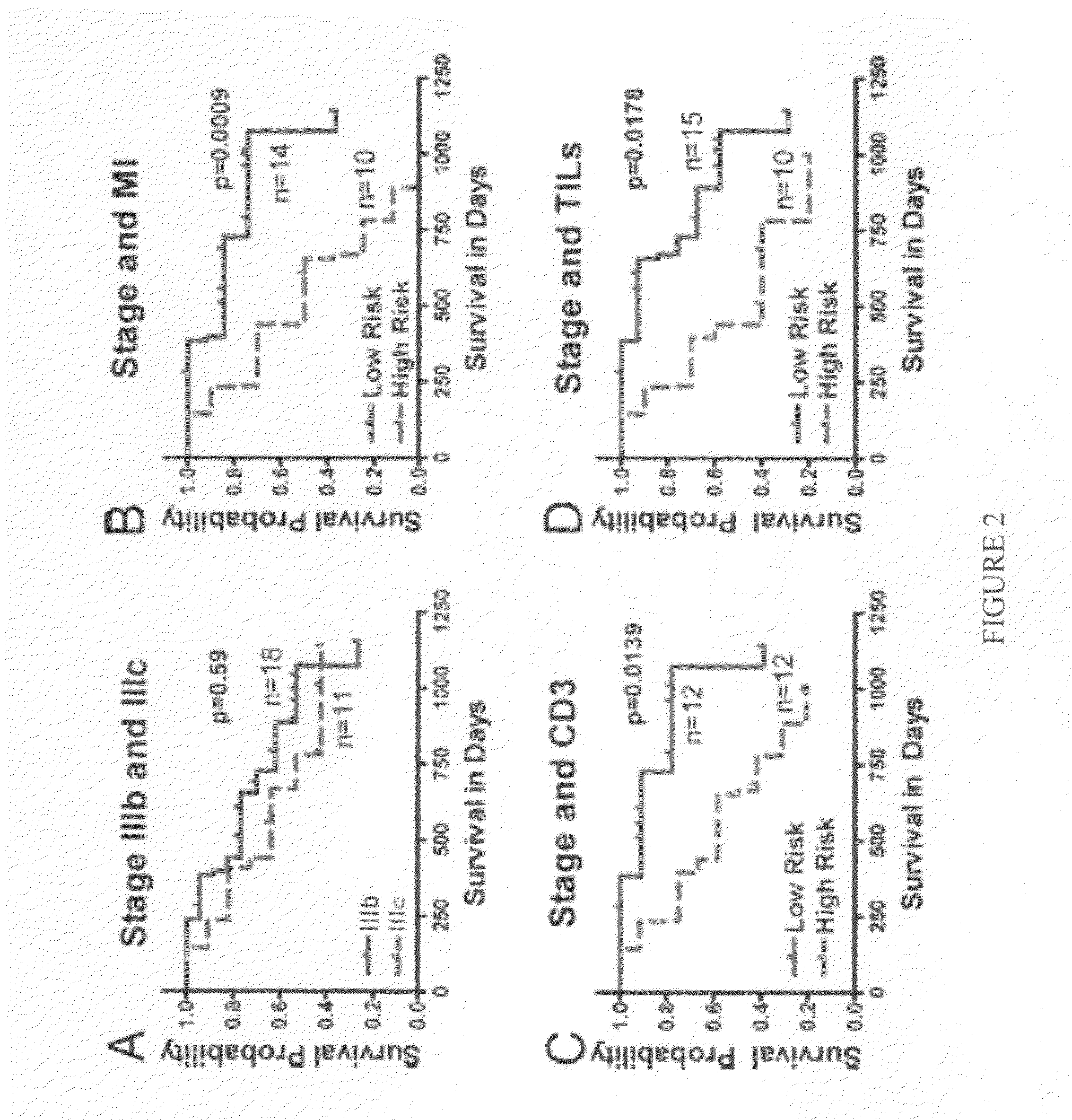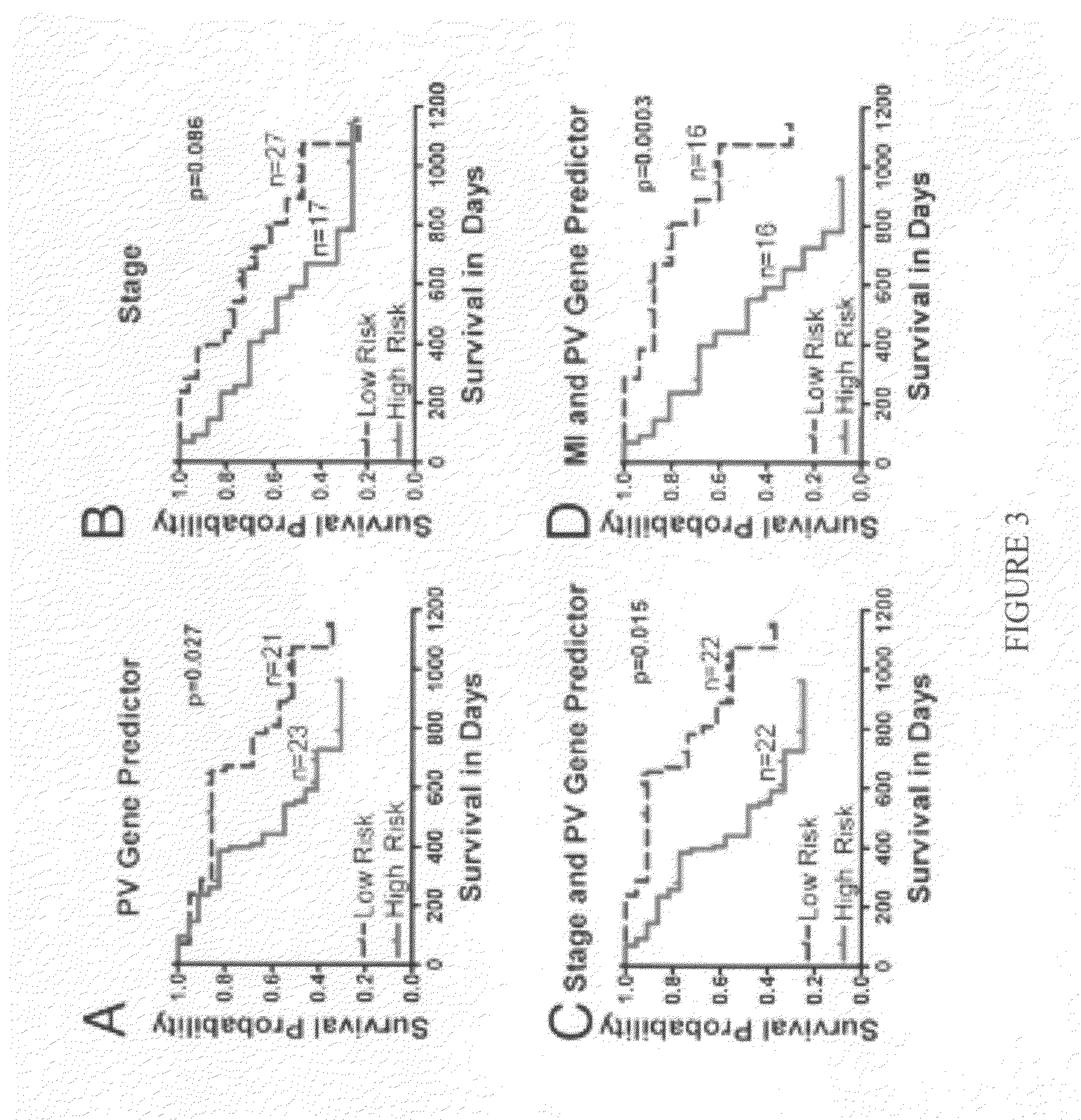Methods for predicting survival in metastatic melanoma patients
a metastatic melanoma and survival prediction technology, applied in the field of indicators, can solve the problems of insufficient research on the use of leukocytes within lesions as an easy and highly predictive tool of patient prognosis, limited and insufficient treatment options for advanced melanoma patients. to achieve the effect of increasing the duration of survival and promoting the immune response in the patien
- Summary
- Abstract
- Description
- Claims
- Application Information
AI Technical Summary
Benefits of technology
Problems solved by technology
Method used
Image
Examples
example 1
Methods
[0158]Sample Population. Under an Institutional Review Board approved protocol, the present inventors enrolled the first 38 patients and collected 44 melanoma samples, since some patients had 2 or 3 recurrences. Patient median age at 1st recurrence was 62.5 years, with a range from 30 to 92 years. Sixty-three percent of patients were males and 37% were females. All of the patients underwent surgery, 32% received chemotherapy, 24% underwent radiation therapy, and 13% underwent immunotherapy. Eighteen percent of patients presented at stage I, 29% at stage II, 47% at stage III, and 3% at stage IV. For validation, data on an independent cohort of 29 patients available online at ArrayExpress database (www.ebi.ac.uk / arrayexpress) under accession number E-TABM-403 were used. Another independent cohort to validate our findings using MI, TILs, and CD3 consisted of 52 randomly selected samples from patients with stage IIIb and IIIc melanoma.
[0159]MI, CD3 Cell Count, and TILs. The inven...
PUM
| Property | Measurement | Unit |
|---|---|---|
| Fraction | aaaaa | aaaaa |
| Area | aaaaa | aaaaa |
| Area | aaaaa | aaaaa |
Abstract
Description
Claims
Application Information
 Login to View More
Login to View More - R&D
- Intellectual Property
- Life Sciences
- Materials
- Tech Scout
- Unparalleled Data Quality
- Higher Quality Content
- 60% Fewer Hallucinations
Browse by: Latest US Patents, China's latest patents, Technical Efficacy Thesaurus, Application Domain, Technology Topic, Popular Technical Reports.
© 2025 PatSnap. All rights reserved.Legal|Privacy policy|Modern Slavery Act Transparency Statement|Sitemap|About US| Contact US: help@patsnap.com



